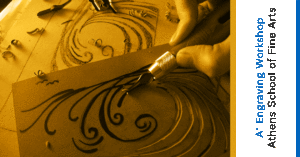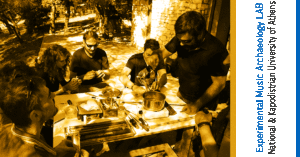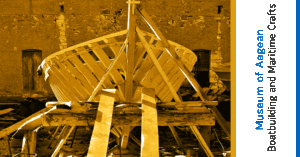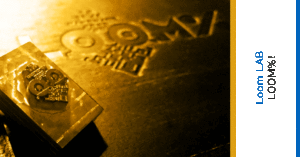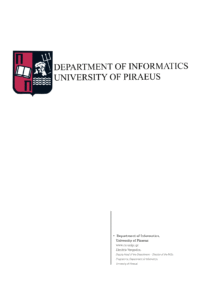Exhibition
The Heritage Management Organisation (HERITΛGE) will be organising its third “HerMa Market” side event at the “Purifier” D10 (Technopolis City of Athens), Athens, from 22 to 23 September 2018. This exhibition will take place within the framework of the 5th HerMa Conference in conjunction with the Athens 2018 World Book Capital, the Eleusis 2021 European Capital of Culture, the European Year of Cultural Heritage 2018 and the National Inventory of Intangible Cultural Heritage . The event allows experts in the sectors of both cultural heritage and business to demonstrate and promote upcoming projects that can serve both communities.
For details and registration fees please sent us an e-mail to: [email protected]
With anticipation for your support and participation,
The Organising Committee
- Engraving Workshop
Leonidas Giannakopoulos, ASFA
Engraving and, more specifically, wood engraving constitutes the oldest and most important technique in printmaking. It was first used broadly by the Chinese to print patterns on fabrics and, since the 6th c. AD, for printing on paper. Since the discovery of mechanical movable type printing from Johannes Gutenberg, wood engraving was used for printing images on paper as prints or illustrations. Photography and offset printing methods replaced the craft of engraving for illustrating books, commercial reproductions, stamps etc. Nowadays, traditional engraving has been limited to the production of visual art works, the decoration of books of special edition, usually circulated in a limited number of copies, and the production of matrices for banknote printing. Thus, engraving, as a craft, was indissolubly linked to the history of the book.
In the framework of the HerMa Market side events of the 5th International Conference on Heritage Management, in collaboration with the A’ Engraving Workshop of Athens School of Fine Arts, an experiential and interactive mini LAB of engraving has been designed, so that visitors and participants of the conference will have the opportunity to get acquainted with the intangible aspects of this ancient craft and experience the production of an engraving art work, the precursor of the book that brought societies to the highest cultural levels.
2. Experimental Music Archaeology Lab
Dr. Chrēstos Terzēs, Trainning Coordinator, Department of Informatics and Telecommunications, National and Kapodistrian University of Athens
HERMES founded in September 2016 as an experimental music archaeology Lab, in order to provide certified training (both theoretical and practical) to 12 young individuals on the reconstruction of fully functional models of fifteen (15) ancient Hellenic musical instruments, based on available archaeological evidence, musical iconography and Hellenic literature, as well as to provide certified training to 40 young musicians on the use of two main types of ancient Hellenic musical instruments, auloi and lyres. Additionally, through the set-up of an interactive portal open to the public, HERMES will be active both in producing and making available original content in digital form as well as in organizing activities and events, at a local and international level, aiming at promoting partnerships and opportunities for networking between institutions and individuals with a special interest on ancient music and instruments. Hermes project is hosted at the Department of Informatics and Telecommunications of the National and Kapodistrian University of Athens, is under the auspices of the Ministry of Education, Research and Religious affairs of the Hellenic Republic and funded by the Stavros Niarchos foundation.
The contribution of the HERMES project to the 5th International Conference on Heritage Management comprises three distinguished workshops on which members of the team will demonstrate and present to the participants and the general public:
1. The production of reeds for the ancient Hellenic aulos -that is the part of the instrument made of cane and produces the sound after blowing through it
2. The assembling and the tuning of the ancient Hellenic lyre -that is the joining of a wooden tortoise like soundbox to the wooden arms, the yoke, and the tail piece, fixing of the leather skin, stretching and tuning the strings by tunning pegs
3. A specific playing technique of the Ancient Hellenic lyre -that is an unknown to the contemporary musical experience type of accompaniment- through which the fingers of the left hand of the player mute the strings that are not supposed to be heard during the strumming of the right hand.
3. Ship Craftsmanship
Collaborative workshop: Kostas Damianidis, Architect-Dr, History of Shipbuilding – Lena Stefanou, Lecturer University of Kent, HERITΛGE Public – Erik Wedelin, Uppsala University – Fredrik Leijonhufvud, Department of Conservation, University of Gothenburg
In the framework of the 5th International Conference on Heritage Management and giving the opportunity to elaborate this year the significant aspects and values of the traditional crafts, a workshop is designed aiming to promote the art of wooden shipbuilding as maritimecommunities have developed through time.
Since for 2018 Sweden is the Honoured Country of the Conference, we propose a collaborative study between Greece and Sweden with core objectives the promotion and management of this traditional craft, which gave the means for cultures of intelligence and innovation to be established in small communities.
Although, this heritage developed differently by the archipelagos dominants, in our days both countries confront similar issues and threats for the continuity of the knowledge of this traditionally transmitted oral craft. This is the challenge that the Conference aspires to initiate a creative dialogue and an exchange of ideas and best practices.
The workshop is organized with the support of the Swedish Institute at Athens and the Association of the Friends of the Museum of Aegean Boatbuilding and Maritime Crafts.
4. Loom Workshop
Collaborative workshop: LOOM%, HerMa Conference
Welcome to the world of LOOM%! A world where the web of seduction is being woven. Our workshop was born in September of 2016 from Anastasia Xenaki and Petros Christoforatos, with sole purpose and objective to bring out the art of traditional weaving through the contemporary needs and demands.
We believe that you cannot create the future unless you know what has preceded. Thus, in order for someone to understand the concept of LOOM% and the way in which it is being transfigured into art, they have to take into consideration the main characteristics of the culture of weaving. A culture that dates back thousands of years and that has evolved and survived throughout the years, like a living organism.
The beginnings of weaving are lost in the depths of human prehistory. Especially in Greece, the plethora of stone verticils, that were brought to light by ancient excavations attests to its dissemination since the age of the Neolithic Era.
The mother of all arts as the German professor Gottfried Semper, a leading professor in architecture, aptly named it, has influenced over time – to the maximum extend – not only the types and the symbols, but also the colors in all the arts!
With the creation of fabric, humans wanted to cover their base needs in clothing. Women used to weave at the house loom all the fabrics needed by the family and other hand woven textiles for everyday uses. The main materials used for weaving were mostly plant fibers (cotton, flax etc.) and of course wool and silk. The patterns, that grace Hellenic hand woven textiles are mostly geometrical shapes, stripes and schematic representations of humans, plants, animals and objects.
In our workshop we combine the patterns of the past with the colors and trends of today, staying faithful to the rules of the art of weaving. All our products are created in traditional, wooden, manual looms with the use of “muscular” power…


